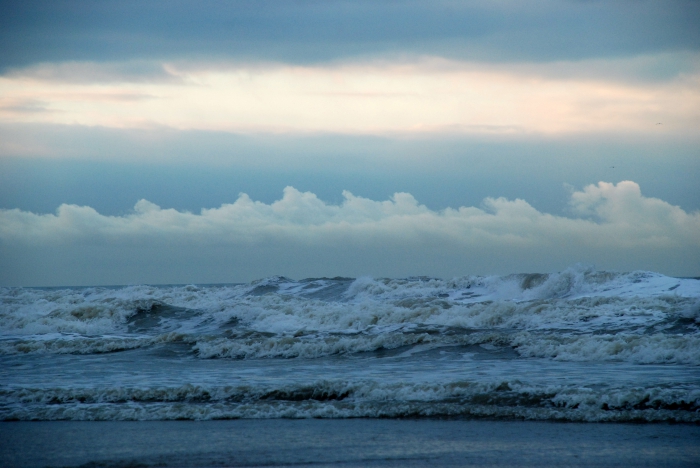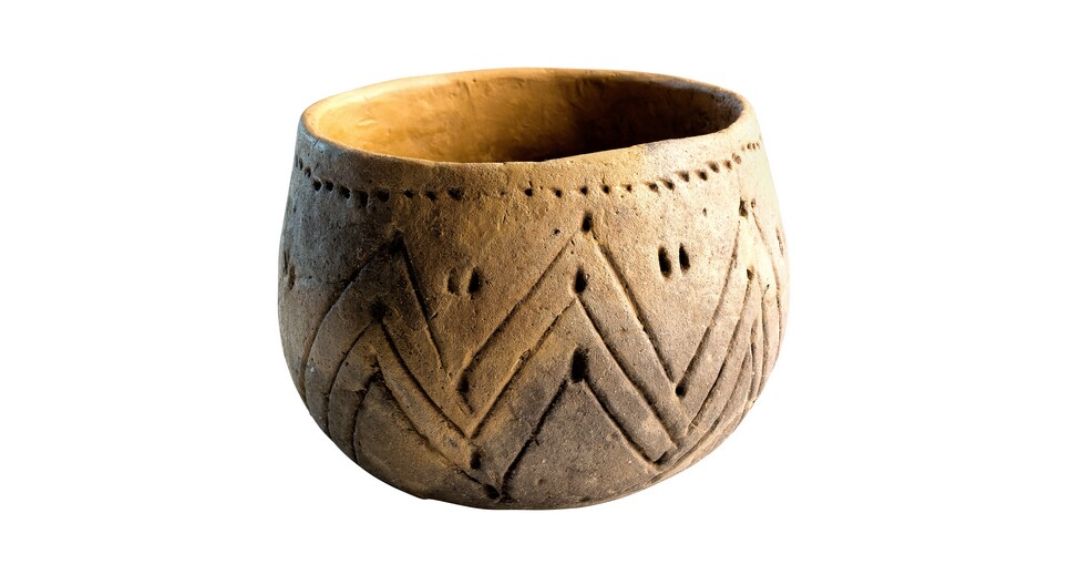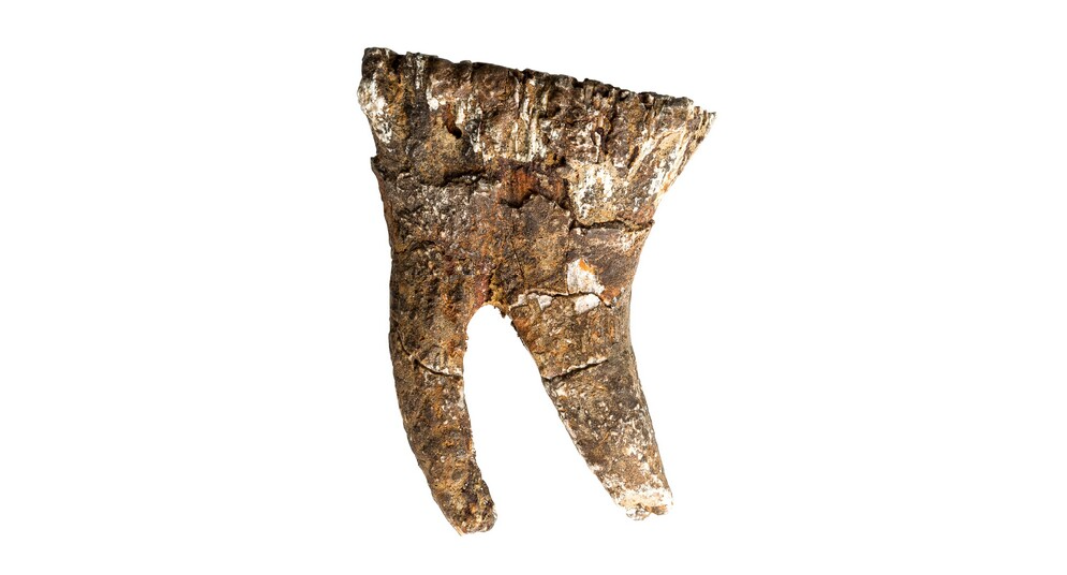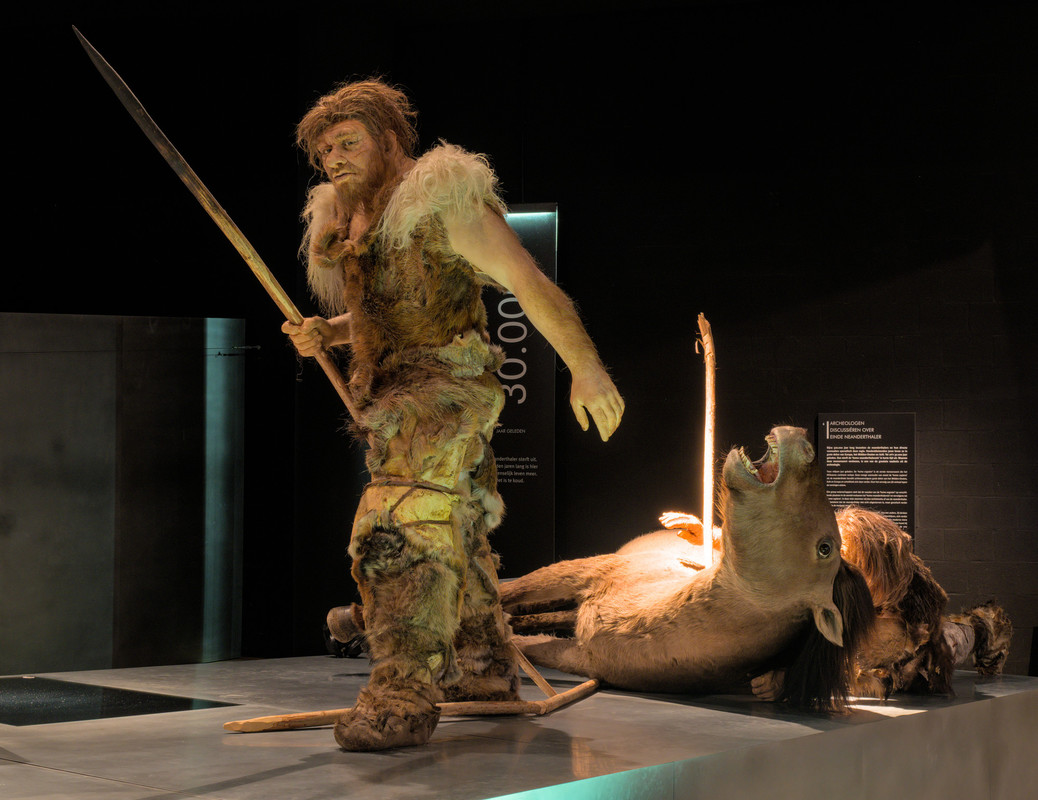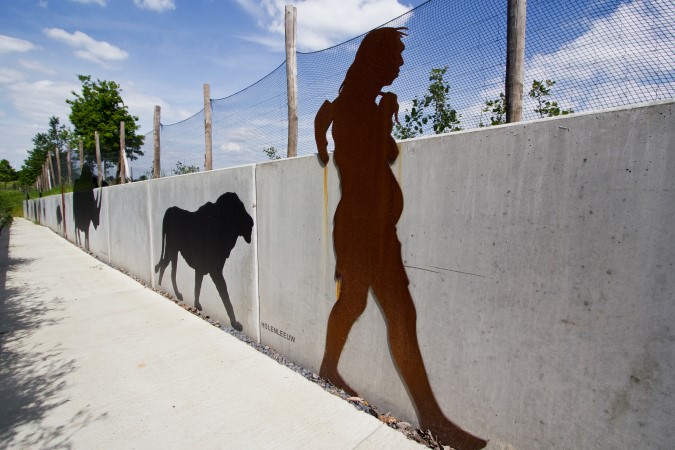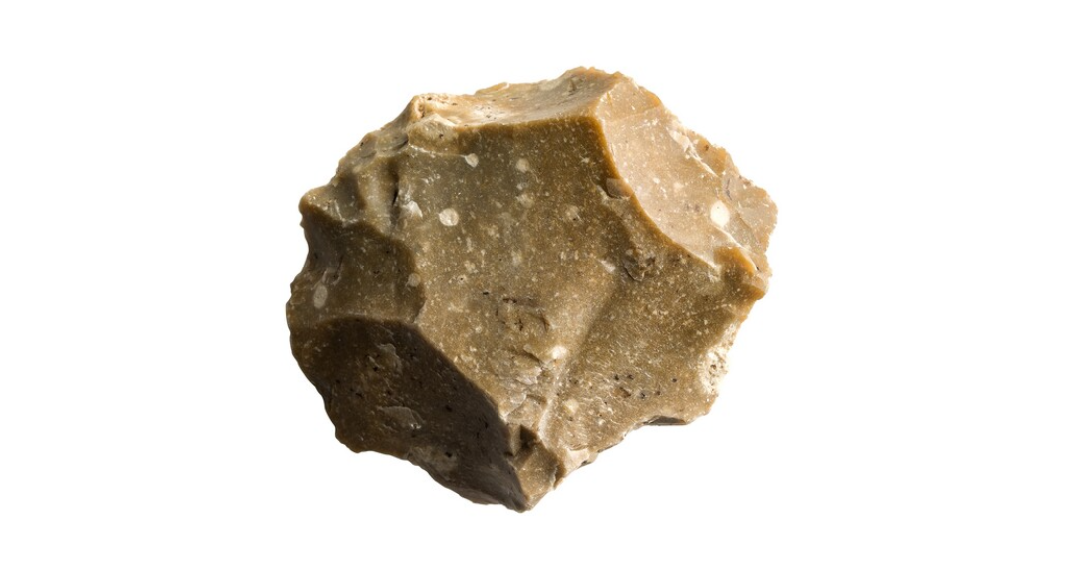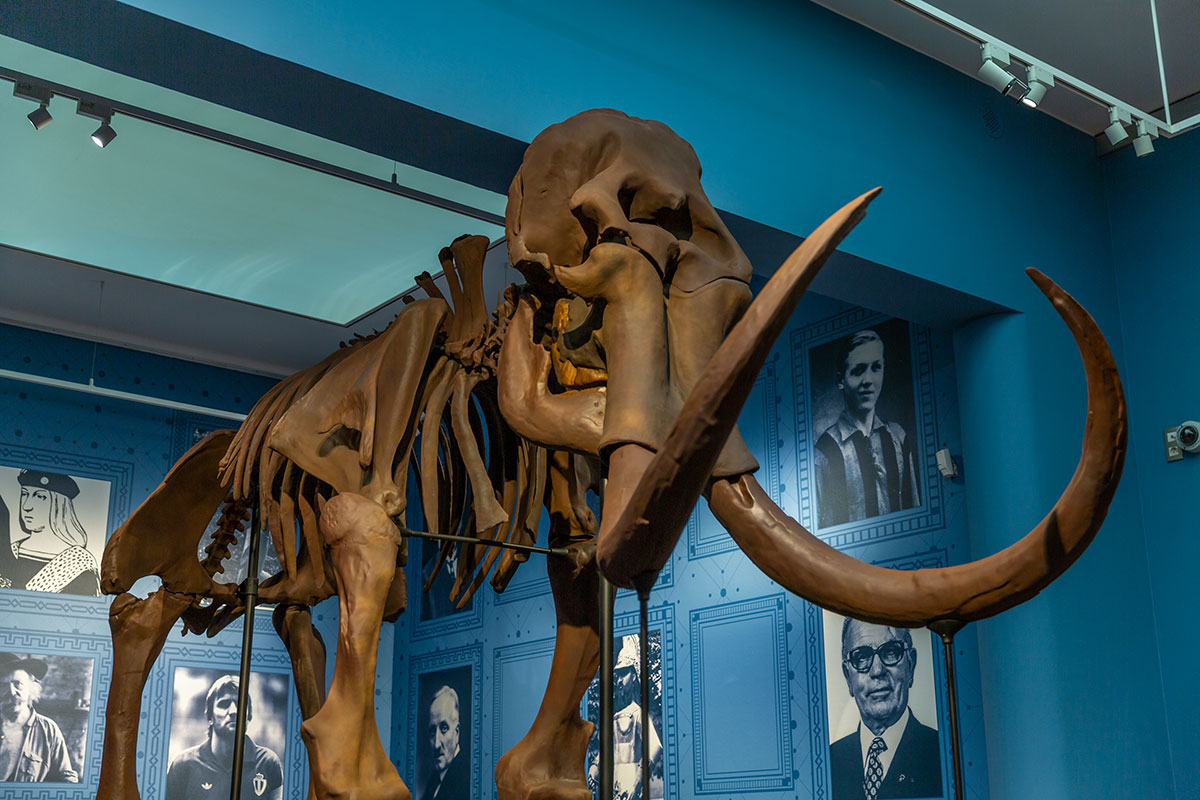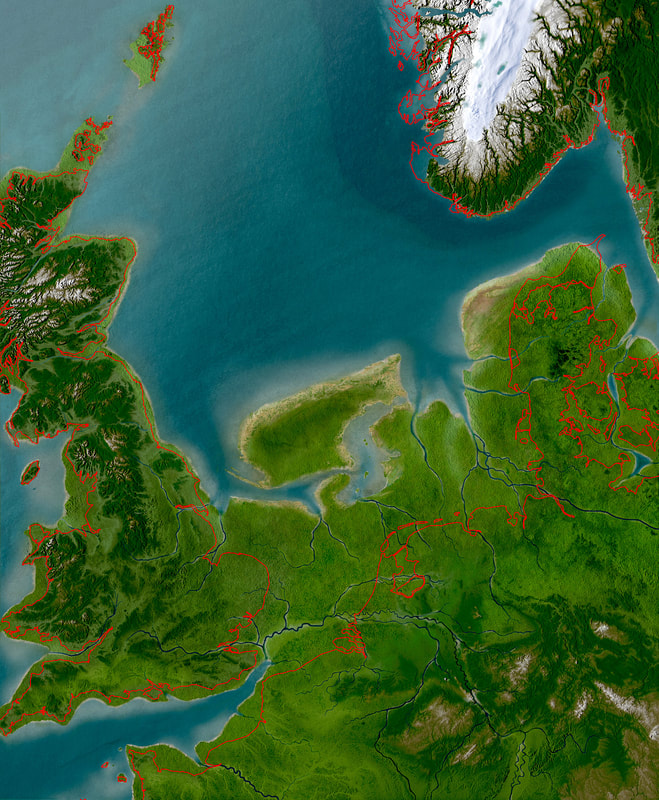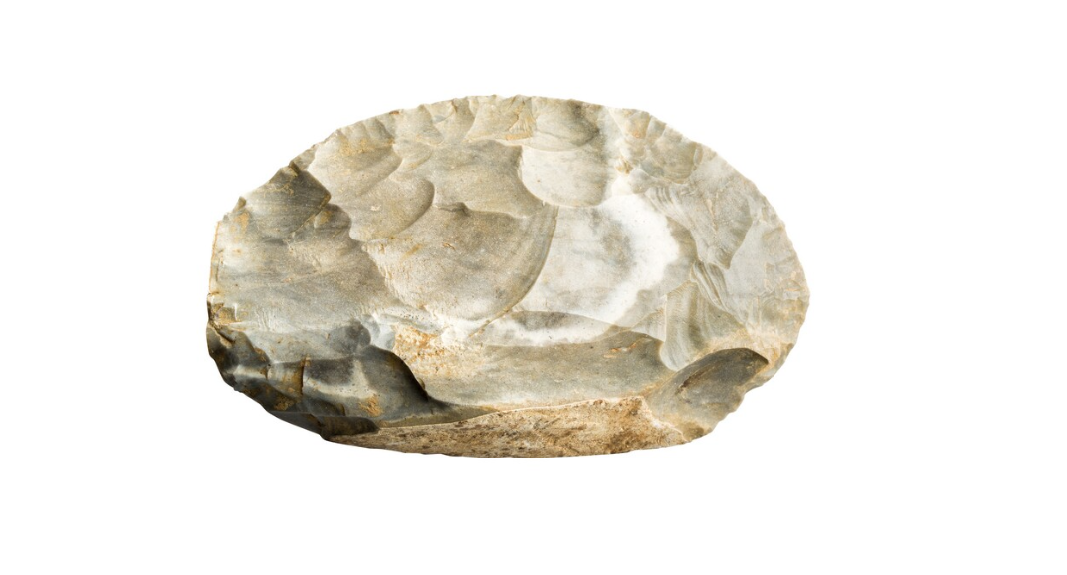
Edge scraper, a tool for working with skins, found in Veldwezelt-Hezerwater and between 33,000 and 250,000 years old (2 cm long) | Tongeren, Gallo-Roman Museum, V05/12
Neanderthals in the Valley of the Meuse
The Earliest Traces of Human Habitation
For thousands of years we, modern humans or homo sapiens, were not the only human species on earth. We shared the world with the Neanderthals. In Veldwezelt in Limburg, on the bank of the Hezewater, Neanderthals built temporary shelters. They are among the oldest discovered human settlements in the region now called Flanders.
The Neanderthals evolved some 400,000 years ago from another human species, homo heidelbergensisso-called after the German city of Heidelberg, where the first discovery of this species was made. . The habitat of the Neanderthals extended across Europe, the Middle East and Central Asia. They were very similar in appearance to modern man. However, there were differences. For example, they had rather heavier arched eyebrows and usually a somewhat greater skull capacity. They were very muscular and on average 1.65 m tall.
Neanderthals were hunters and led a nomadic existence. In Veldwezelt archaeologists uncovered four temporary camps and a spot used to extract flint. The traces are between 133,000 and 58,000 years old. In and around the camp sites archaeologists also found 2,500 tools, made of local flint. In addition they found bones and teeth of prehistoric animals, such as the mammoth, the woolly rhinoceros and the wild horse.

Tongeren, Gallo-Roman Museum, GRM 19169
Flint hand axe, probably made by a Heidelberg man (10.3 cm long, 5.6 cm wide, 2.6 cm thick).
The Earliest Traces of Human Habitation
Both the Neanderthals and modern humans are descended from an older human species, homo heidelbergensis. In Kesselt (near Veldwezelt in Limburg) archaeologists found a flint hand axe and a few other tools which were probably made between 400,000 and 500,000 years ago by this common ancestor.
The Neanderthals left multiple traces in this region. They also made flint tools. The locations where these were found are concentrated around the lower reaches of the Meuse in present-day Limburg. That is no coincidence: a lot of flint occurs naturally in that area. No bones or other fossil remains of Heidelberg men or Neanderthals were found. However, through the shape and age of the tools, archaeologists are agreed that they were made by these human species. They were able to deduce the dating from the way the tools were made and the geological layer in which they were found.
Approximately 38,000 years ago the Neanderthals vanished for good from the face of the earth. In that period increasing numbers of animal species, which they hunted, died out. Still, the Neanderthal survives in a modest way: research has shown that modern humans share between 1% and 4% of their DNA with Neanderthals. During their contacts, therefore, between 250,000 and 33,000 years ago, there was interbreeding between homo sapiens and Neanderthals.
Focal points
Discover more on this topic
Non-fiction
Verdwenen wereld in de Noordzee
Sidestone Press, 2021
Het halssieraad van de Neanderthaler: op zoek naar de eerste denkers
Wereldbibliotheek, 2004
Neanderthalers in Europa
Davidsfonds, 2003
Hoe we mensen werden: een geheel nieuwe kijk op de oorsprong van de mensheid
Spectrum, 2020
Mijn Europese familie: de laatste 54.000 jaar
Athenaeum-Polak & Van Gennep, 2017
De langste reis. Op zoek naar het ontstaan van de mens
Davidsfonds, 2012
Cool! Neanderthalers in het Maasdal
Natuurhistorisch Museum Maastricht, 2014
Wie vermoordde de neanderthaler?
EPO, 2020
De eerste stappen: hoe rechtop lopen ons mens maakte
Harper-Collins, 2020
De eerste mensen in de Lage Landen
Van Gorcum, 2022
De oudste ronde van Vlaanderen. Een archeologisch parcours
Davidsfonds Uitgeverij, 2011
Mevrouw Sapiens: de vrouw in de prehistorie
Noordboek, 2022
Toen wij nog Neanderthalers waren en andere verhalen over de menselijke evolutie
Karakter, 2020
Ons verste verleden: historisch denken over de prehistorische mens in de oude wereld
Universitaire Pers Leuven, 2020
Overlevers. Hoe het komt dat wij de enige mensachtige op aarde zijn
Nieuw Amsterdam, 2012
Fiction
Vuurmeisje
Davidsfonds, 2018. (12+)
De laatste neanderthaler
Cargo, 2017
Mijn familie: een reis door de tijd
De Eenhoorn, 2009. (3+)
Het lied van de vreemdeling
Leopold, 2020. (12+)
Onder de golven: het verhaal van Doggerland
Fontaine, 2021
Feun en de vloek van de sjamaan
Manteau, 2005. (en 3 andere delen van de Feun-reeks)
Nikki en de Neanderthalers
Kluitman, 2018. (9+)
Neanderthaler
Uitgeverij Daedalus, 2015. (driedelige stripreeks)
